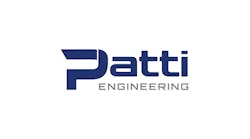Most public utilities deliver basic power and water, and God bless them for doing it. However, a few go beyond their essential missions, and seek to further enhance the overall well-being and prosperity of their communities.
One of these is Clarksville Light & Water (CLW) in Arkansas, which is a 103-year-old, municipally owned utility that provides electricity, water and wastewater services at not-for-profit rates to 4,500 retail customers and just under 10,000 residents, as well as wholesale water to eight nearby towns and local water districts with about 18,000 more customers. The utility reports that supporting reliable, predictable, and consistent service not only saves revenue, but also lets it help Clarksville differentiate itself, attract new investment from the business community, and drive job creation.
CLW has 65 staff and $25 million in annual revenues from its three utilities that operate as separate business units. Likewise, CLW is governed by a separate utility board, which was established by Clarksville's city council in 1947 to give it some autonomy from elected officials. This enables the utility to "operate like a business," even though the council still assigns board members, approves debt issuance and approves rates.
Citywide, fiber-optic infrastructure
To carry out its forward-thinking mission, CLW uses ozone for primary disinfection, while its power supply mix for 2015 was 47% renewable sources, including hydropower, landfill gas and wind. In addition, the utility spent much of 2015-16 enhancing its municipal infrastructure with 16.7 miles of 288-strand fiber-optic cable installed in redundant loops throughout the city to avoid single points of failure. This project included implementing Inductive Automation's Ignition supervisory control and data acquisition (SCADA) software and Bedrock Automation's control system for cyber-secure SCADA RTU monitoring and control of CLW's electric, water and wastewater facilities.
The project is part of Clarksville's long-term vision for a locally owned and operated fiber-optic network, serving local residents, businesses, government, hospital, schools and the local University of the Ozarks. However, it's also expected to potentially save CLW up to $2 million over the next five years by improving control, monitoring and security of the city's electric grid and water treatment facilities. This is because John Lester, CLW general manager, recognized that an investment in the fiber-optic network could also provide long overdue monitoring and control of the city’s four electrical substations and water treatment and distribution operations, and eventually its wastewater utility systems. Besides reducing purchased power losses, the fiber-optic network is also expected to allow CLW to provide broadband Internet to residents, and keep another $810,000 per year in the community.
“We had an immediate need to implement water utility SCADA and HMIs during our recent, $10-million water plant expansion, and in the short term decided to use wireless radios. However, it soon became apparent that wireless couldn't deliver the reliability and security that our critical infrastructure demanded," says Lester. "A fiber-optic network communication system was the most reliable, cost-effective and secure network we could put in place. It also offered the potential to layer in other revenue generation services, both internally and externally. The fiber-optic network gave us a way to tap that new functionality for our remote operations, and when we learned that choosing Bedrock as our RTU system would mean military-grade cyber security was already built in, we saw it as a cost-effective way to reduce our cybersecurity risk, while also addressing looming North American Electric Reliability Corp.-Critical Infrastructure Protection (NERC-CIP) compliance requirements.”
Remote functions enabled by the fiber-optic network and SCADA software include tank level monitoring, valve opening and closing, pump operation and other water treatment plant (WTP) tasks, such as monitoring lift stations, and monitoring and controlling wastewater plant. On the electrical side, its secure network and SCADA capabilities allow substation monitoring, load control, automatic circuit switching, and improve reliability and shortened response time. In the future, CLW plans to run and exercise its local backup generating sets during peak times, better manage demand costs, and reduce energy losses with intelligent grid tools.
Protecting network and utilities
“Many utility managers are trying to understand what they're supposed to do about cyber threats," adds Dee Brown, PE, principal at Brown Engineers LLC in Little Rock, Ark., which provided electrical, mechanical and system engineering services for CLW's project, and completed installation in 2Q16. "Bedrock embeds authentication in the hardware layer, which offers the most hardened and easily implemented solution we’ve seen.” Brown presented "Building Future-Proof Utilities" during Inductive's Ignition Community Conference 2016 on Sept. 19-21 in Folsom, Calif.
“We wanted each substation RTU to have enough horsepower to aggregate all power meter data and protective relay data for sequence of event recording," adds Brown. "We also considered future development needs for power management techniques that support demand management and load-shedding controls. Bedrock controllers provide all those features in an easy-to-manage integrated development environment (IDE) that uses IEC 61131-3 programming and has cybersecurity protections embedded at the hardware level. These days, cyber attacks are not if, but when. However, if we can do cybersecurity like this with Bedrock controllers, then we think everyone can and should be doing it. For us, we're working in the same PLC-type environment as always, but now we have to do better than protecting device in bubbles at the edge of the network. The elegance of the Bedrock system is that the supply chain manufacturing process embeds the security keys to ensure the highest levels of hardware and software authentication.”
[sidebar id =1]
With its secure network in place, CLW can control functions via remote access for RTU sites, as well as perform 24/7 automated and on-demand remote monitoring of key assets. This connectivity also lets it optimize asset maintenance tasks with custom email and text alerts based on real-time data, which Lester reports is already generating results.
“This project has reduced overtime—a direct savings. Problems can be identified and sometimes even solved without having to physically be at the plant or in the field. That translates into cost savings, improved reliability and greater customer satisfaction,” says Lester. "We're in position and ready to do business with the Industrial Internet of Things (IIoT), which we think is going to be as important an economic development as electricity was 100 years ago."
Roy Young, water plant treatment superintendent at CLW, adds, “I was away from the office when two low-level tank alerts popped up on my tablet. This saved at least an hour in responding to a water line break, which helped us prevent low-pressure areas or a dry-tank event, which would have triggered a boil order for the public.”
Water, power on one control platform
Bedrock adds its platform can be deployed as a PLC or DCS, or as the SCADA RTU that enabled CLW to simplify and standardize its cyber-secure control environment across all of its departments, which can all link to Ignition SCADA software for display. For instance, extending the new controller/SCADA deployment to the grid offered a simple, effective way to add secure control and monitoring of remote assets. At each of CLW’s substations, a Bedrock controller directs and protects data transfers along the new citywide fiber ring. This design allows all five Bedrock controllers to connect directly to the fiber-optic cable without added copper connectors. Brown reports they've been up and running since June 9 with no problems. With this infrastructure established, CLW plans to use automated circuit switching, as well as monitoring and load balancing, on the local grid, which will let it realize demand-side management for the electric utility. CLW expects to improve overall reliability, shorten response times, and reduce power supply costs.
Modeling protective relays, displaying data
Protective relays are used to monitor electrical parameters to detect abnormal conditions that could damage assets. Existing protective relays at CLW could communicate via a serial port, but this connection wasn't being used. Brown Engineers developed an application that extended the communication libraries provided by the Bedrock IDE to allow communication with the existing protective relays. A model of the protective relays was created in the Bedrock IDE and a corresponding model was created in Ignition. Both protective relay models were then connected by configuring a few communication parameters, and then the data from the protective relays was made available to Ignition, where it's displayed, stored and used to create alert notifications. The same methodology was used to integrate power metering equipment.
"Common design elements allowed us to connect to legacy protective relays and power meters," adds Brown. "We can now see daily weather and temperatures, and show how they're affecting the electric utility's load. We'd never had this onscreen before. We also have screen maps and operating screens for each of the four substations."
Brown Engineers also collaborated with Inductive and Bedrock to create templates and tools that streamline and simplify engineering across all operations. Since the Bedrock IDE supports a more modern and open implementation approach, Brown easily instantiated reusable development components into a logical asset model. These assembled components interact directly with the physical asset, and can be reused in more complicated development components, which isn't possible with less sophisticated control technologies. With its few part numbers and open philosophy, Dee Brown adds that Bedrock's engineering environment was an ideal complement. “This platform scales easily from a single RTU or PLC to supporting a complex control network; has more memory and horsepower than anything out there; and all its applications can be engineered from the same 12 or so part numbers," says Brown. "There isn’t a conventional platform that's as simple, scalable or secure.”
In the near future, CLW intends to introduce localized back-up power generation during peak times by extending the Bedrock platform into key nodes, such as back-up generators installed at hospitals or other major facilities. It's also planning remote telemetry units for sewer and water equipment with Bedrock controls and Ethernet-based radio linking back to its Ignition software, as well as using Bedrock and Ignition for its sewer plant controls and distributed generation. Again, this is all a part of CLW's overall intelligent grid vision for better managing power demand costs and reducing energy loss.
[sidebar id =2]



